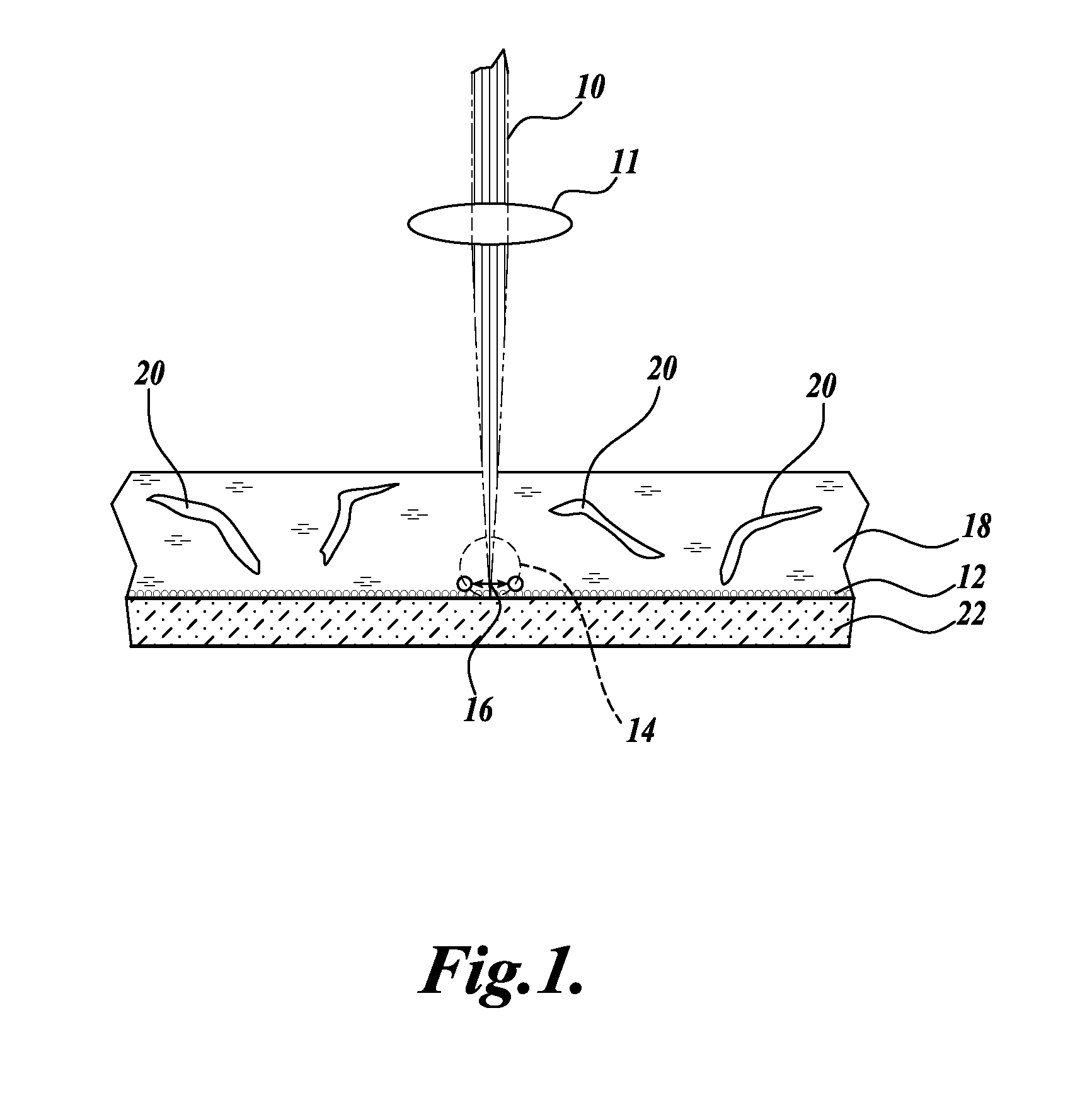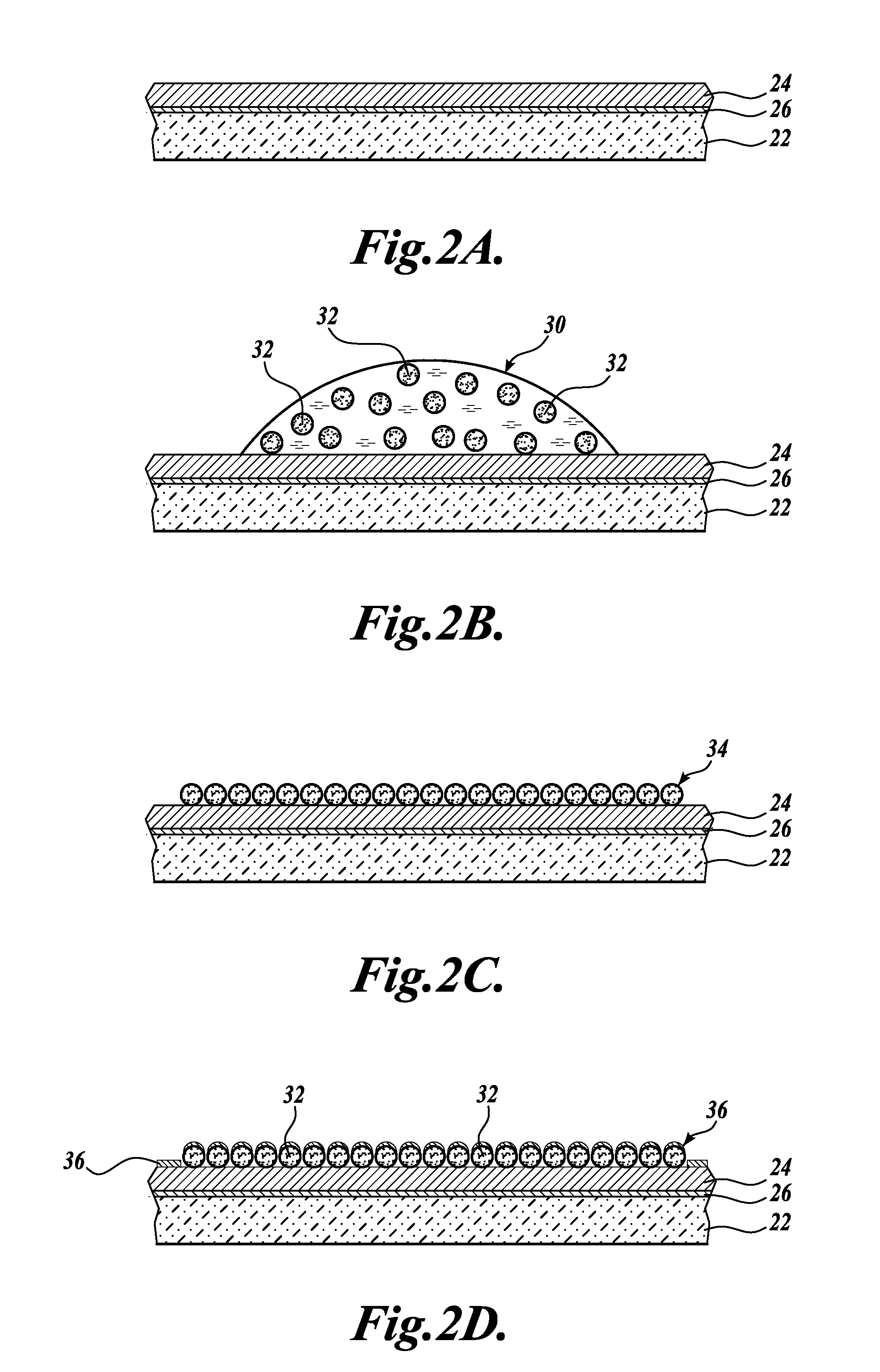Trapping of micro and NANO scale objects based on localized surface plasmon
a micro- and nano-scale technology, applied in the field of trapping of micro- and nano-scale objects based on localized surface plasmons, can solve the problems of high optical intensity of trapping light, damage to photo-sensitive particles, and the potential of dna strands being used in the technique of uncoiling and stretching, so as to reduce the risk of photodamage, reduce the risk of optical damage, and the effect of low optical intensity
- Summary
- Abstract
- Description
- Claims
- Application Information
AI Technical Summary
Benefits of technology
Problems solved by technology
Method used
Image
Examples
example 1
Fabrication of Au Nanoshell Films
[0142]The Au nanoshell film is formatted using surface-adsorbed polystyrene spheres as a template. The use of monodisperse polystyrene spheres covering a wide range of sizes permits the production of equally monodisperse Au nanostructures. The procedure (shown in FIG. 8) to build the Au nanoshell film begins with cleaving a small coupon, generally 1 cm×1 cm area, from a silicon wafer (Ultrasil Corporation, Hayward, Calif.). The sample is cleaned by rinsing with xylene, acetone, isopropyl alcohol (IPA) and de-ionized (DI) water followed by drying with nitrogen gas. Then, the sample is evaporated with Au in a vacuum of 5×10−6 Torr at a rate of 1 Å / s to a final thickness of 20 nm using Cr as the adhesion layer. The next step is to prepare the sphere solution 100 mM phosphate buffer (pH=7.6) (Sigma-Aldrich, St. Louis, Mo.) containing 15 mM carbodiimide solution (1-ethyl-3-(3-(dimethylamino)propyl)carbodiimide, Sigma-Aldrich, St. Louis, Mo.) and polystyre...
example 2
Thermal Evaporation of Au
[0143]For evaporation a thermal evaporator (Auto 306 Vacuum Coating Systems, BOC Edwards Group Inc., Wilmington, Mass.) was used at a base pressure of 2×10−6 Torr; the growth rate was monitored by a quartz crystal microbalance and manually adjusted to 1 Å / s. Gold of 99.95% purity was obtained from. 20 nm of Au were evaporated onto the Si coupon for preparation of Au substrates. The same amount of Au was evaporated onto the adsorbed polystyrene spheres for the final Au nanoshell formation.
example 3
Self-Assembly of Polystyrene Spheres
[0144]To prepare the sphere suspension, 100 mM phosphate buffer (pH=7.6) containing 15 mM carbodiimide (EDC), polystyrene suspension and deionized water are mixed together at certain ratio in the Eppendorf tube. The sample after Au evaporation is cleaned using oxygen plasma for about 1 minute to remove the organic impurities on the surface. Then the sphere suspension of 25 μl is deposited on the surface of the sample using a pipette. The suspension forms a hemispherical shape since the surface of the sample is hydrophobic. The sphere adsorption begins immediately upon exposure of the substrate to the sphere suspension. The adsorption process is allowed to continue for about 1 hour. Then the sample is washed by a copious amount of deionized water to remove the non-adsorbed spheres on the surface. Subsequently the sample is dried in the air and the round boundary between the polystyrene sphere monolayer and the remaining Au surface can be clearly se...
PUM
| Property | Measurement | Unit |
|---|---|---|
| radius | aaaaa | aaaaa |
| radius | aaaaa | aaaaa |
| radius | aaaaa | aaaaa |
Abstract
Description
Claims
Application Information
 Login to View More
Login to View More - R&D
- Intellectual Property
- Life Sciences
- Materials
- Tech Scout
- Unparalleled Data Quality
- Higher Quality Content
- 60% Fewer Hallucinations
Browse by: Latest US Patents, China's latest patents, Technical Efficacy Thesaurus, Application Domain, Technology Topic, Popular Technical Reports.
© 2025 PatSnap. All rights reserved.Legal|Privacy policy|Modern Slavery Act Transparency Statement|Sitemap|About US| Contact US: help@patsnap.com



